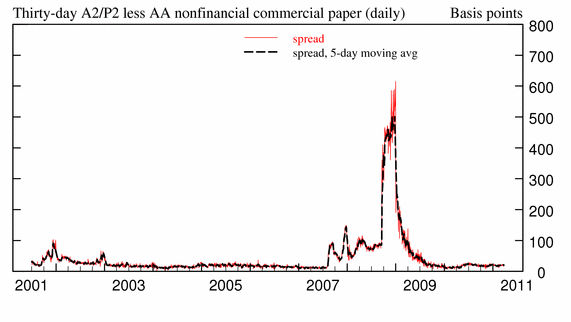Focus - A new form of intermediation




INTRODUCTION
Will Kerry, Jean Portier, Luigi Ruggerone and Constant Verkoren argue that high and rising levels of nonperforming loans in the euro area have burdened bank balance sheets and acted as a drag on bank profits. Banks, striving to maintain provisions to cover bad loans, have had fewer earnings to build-up their capital buffers. This combination of weak profits and a decline in the quality of bank assets, resulting in tighter lending standards, has created challenging conditions when it comes to new lending. Nicolas Véron shares the same view as he believes that EU reliance on banks is excessive and that new forms of intermediation need to be developed. Both articles call for new sources of credit through different banking activities called shadow banking.
In this focus we give a short overview of what is shadow banking and the risk it presents.

Raising concerns on shadow banking in the EU
-
Defined by the FSB as credit intermediation outside the conventional banking system, shadow banking grew as credit derivatives were introduced so bank could move liquidity risk and credit risk off commercial bank balance sheets, therefore transferring risks outside the regulation and regulatory framework of traditional banking. For twenty years it freed huge amount of liquidity and enabled growth.
-
As David Keohane highlighted it, size of shadow banking is difficult to estimate due to its fuzzy definition but it could represent more than 50% of total banking assets. However shadow banking system is rather fragile: excessive and pro-cyclical leverage fueled an illusion of liquidity and led to the undervaluation of risks.
-
An IMF report on shadow banking stated that at the end of 2013, shadow banking in the United States accounted for about 30 percent of systemic risk, about as much as the banking sector. However, for the euro area and the United Kingdom, the shadow banking sector MCSR amounts to only 13 percent and 7 percent, respectively. The contribution of different sectors to systemic risk is fairly stable over time.Although shadow banking is rather a US problem than a Euro area one, ECB’s financial stability reports warns of risks ahead. Especially Euro Intelligence fears an abrupt end of the global search for yield, aggravated by a stop of liquidity as leverage is rising, that could lead the eurozone shadow banking sector to grow and volatility to pick up.
Factors that encourage the GROWTH OF SHADOW BANKING
-
Bank regulation: More stringent capital requirements, for example, are associated with stronger growth of shadow banking. This is consistent with the notion that banks have an incentive to shift activities to the nonbank sector in response to certain regulatory changes.
-
Liquidity conditions: The negative correlation of shadow banking growth with term spreads and interest rates becomes considerably stronger after 2008. This shift is in line with the changed role of the term spread in the context of quantitative monetary easing since then. However, there was no direct evidence for the role of capital flows, possibly because their effects are already captured by the other explanatory variables.
-
Institutional cash pools and financial development: Stronger growth of institutional investors is associated with higher growth in shadow banking, consistent with complementarities and demand-side effects. Alternatively, this could reflect a general trend in financial development.
-
Growing banking sector: Countries with higher banking sector growth rates tend to experience higher growth of shadow banking, again suggesting complementarities. Alternatively, the results could reflect a general trend in financial deepening driven by other factor

Risks associated
-
Maturity risk: Based on whether assets are of long or short duration
-
Liquidity risk: Based on whether assets are liquid and easy to trade
-
Credit risk: Based on the share of loan assets that carry substantial credit risk
-
Leverage: Total assets to equity
-
Interconnectedness: How these entities are exposed to banks through asset holdings or liabilities
Unlike commercial banks, MMFs and other wholesale funding sources of the shadow banking system operate without regulatory capital requirements or official sector backstops. They are, therefore, especially vulnerable to rapid contractions of liquidity.
Shadow banks can also cause a buildup of systemic risk indirectly because they are interrelated with the traditional banking system via credit intermediation chains, meaning that problems in this unregulated system can easily spread to the traditional banking system. As shadow banks use a lot of short-term deposit-like funding but do not have deposit insurance like mainstream banks, a loss of confidence can lead to "runs" on these unregulated institutions. Shadow banks' collateralised funding is also considered a risk because it can lead to high levels of financial leverage. By transforming the maturity of credit—such as from long-term to short term—shadow banks fueled real estate bubbles in the mid-2000s that helped cause the global financial crisis when they burst.

FSB RECOMMENDATIONS
-
Regulation of banks’ interaction with shadow banking entities (indirect regulation): Consolidation rules should ensure that any shadow banking entities that the bank sponsors are included on its balance sheet for prudential. Limits on the size and nature of a bank’s exposures to shadow banking entities should be enhanced.
-
Regulation of shadow banking entities: Regulation of shadow banking entities should be assessed and further enhanced from prudential point of view (e.g. capital and liquidity regulation).
-
Regulation of shadow banking activities: Incentives associated with securitization should be adequately addressed.
-
Macroprudential measures: The transparency and reporting of information should continue to be improved as appropriate. Following the recommendations on the monitoring framework for the shadow banking system, authorities should require additional reporting or disclosure as deemed necessary for those entities and activities falling under the definition of shadow banking.
Read more:
Global Financial Stability Report - October 2014 - IMF : Shadow Banking Around The Globe: How Large and How Risky?
Global Shadow Banking Monitoring Report 2014 - Financial Stability Board
For more information about financial risks, read the following focus:


